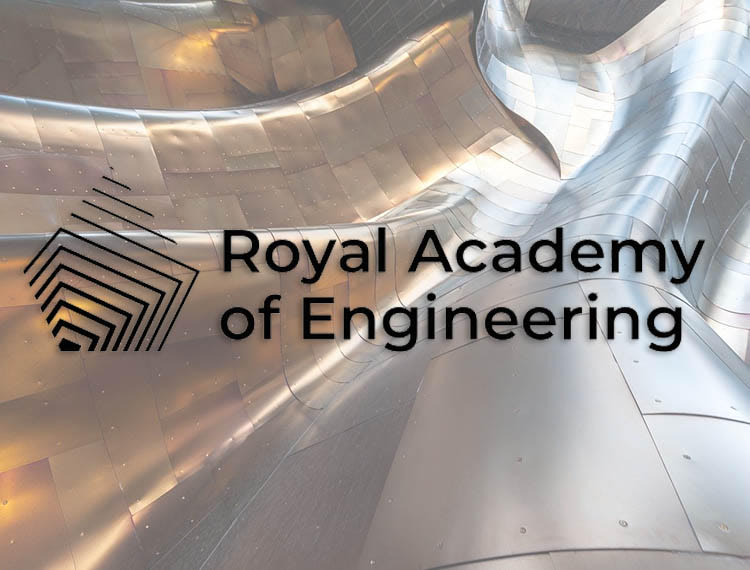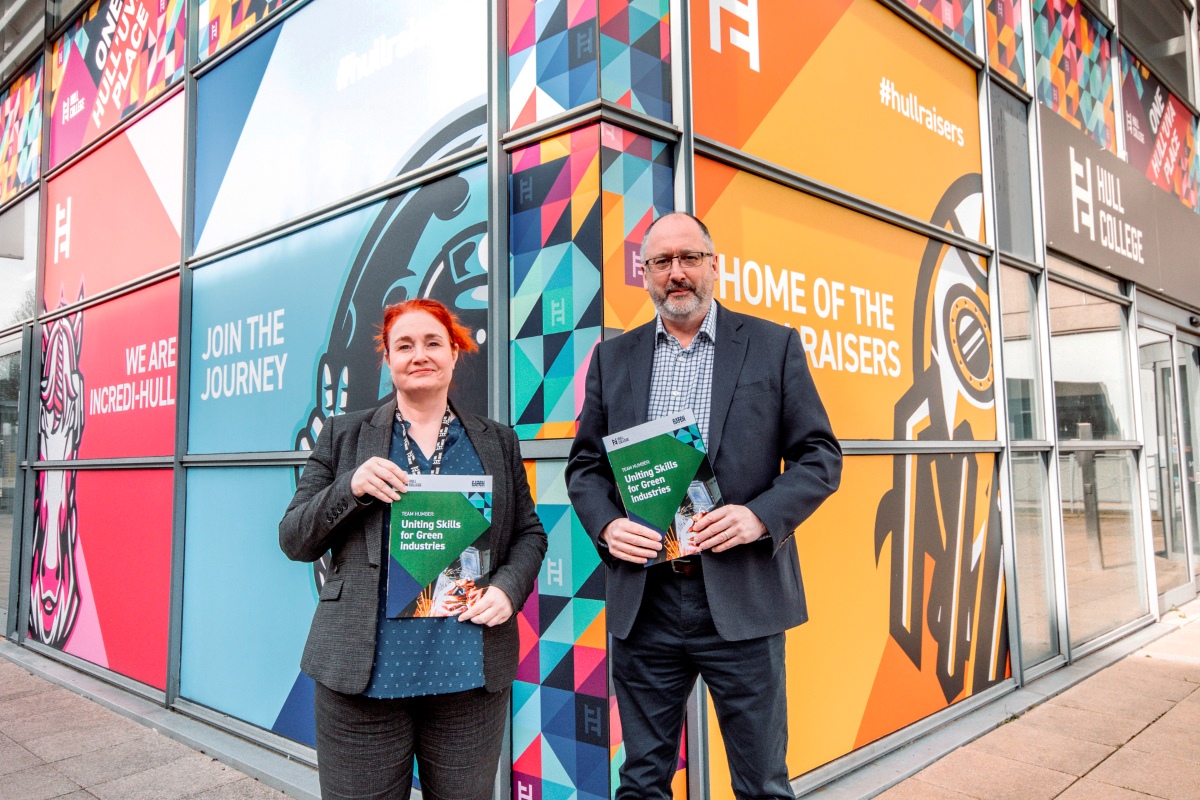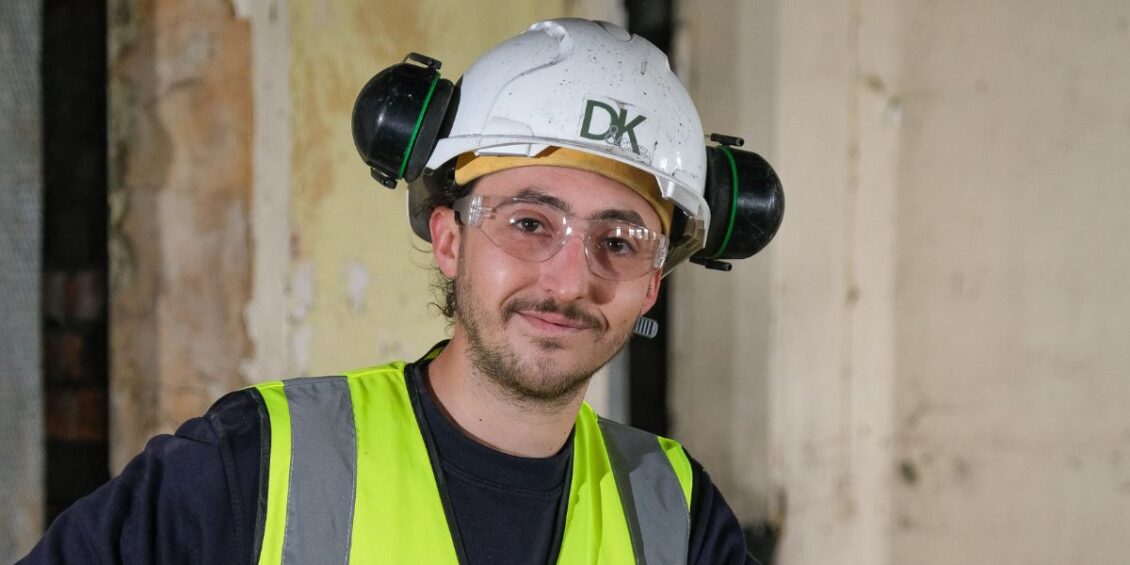MacRobert Award announces 2019 finalists

The Royal Academy of Engineering has today announced the finalists for the 2019 MacRobert Award, the most prestigious prize for UK engineering innovation.
Celebrating its 50th anniversary this year, the MacRobert Award is run by the Royal Academy of Engineering and recognises engineering teams that demonstrate outstanding innovation, tangible societal benefit and proven commercial success within the UK engineering sector.
The four finalists for the 2019 MacRobert Award are:
- Bombardier (Belfast) for developing an innovative, resin-infused advanced composite wing that minimises the aircraft’s environmental impact by reducing both weight and fuel burn in flight, and waste during manufacture.
- Darktrace (Cambridge) for Antigena, an AI-powered ‘self-healing’ cybersecurity system that can both identify and neutralise cyberattacks.
- M Squared (Glasgow), whose SolsTiS Titanium:Sapphire laser produces the world’s purest light and can be tuned across the spectrum – it is enabling new scientific discoveries and bringing about radical transformations in quantum computing, healthcare, navigation and climate change technology.
- OrganOx (Oxford) for creating the metra, a world-first device that can keep a human donor liver functioning outside the body for up to 24 hours prior to transplant.
Entries were submitted by a wide variety of companies from across the UK, with four shortlisted for this year’s prize.
All four finalists demonstrate the ingenuity of engineers who make the impossible possible, bringing products to market that will make a significant impact on people’s lives and on the world in which we live.
The winner of this year’s MacRobert Award will be announced at the Royal Academy of Engineering Awards Dinner at London’s Banqueting House on Thursday 11 July. The winning team will receive the signature MacRobert Award gold medal and a £50,000 cash prize.
Over the last 50 years, MacRobert Award winning innovations have changed the world, delivering enormous economic and societal benefit and contributing to the UK’s standing as the world’s eighth largest manufacturing economy.
The first award in 1969 was made jointly for two iconic innovations: to Rolls-Royce for the Pegasus engine used in the Harrier jump jet, and to Freeman, Fox and Partners for the Severn Bridge.
Other former winning innovations include:
- Allowing doctors to see inside the human body with the CT scanner invented at EMI (1972 MacRobert Award winner).
- Raising one of the world’s largest structures – the Millennium Dome, now the O2, engineered by Buro Happold (1999 MacRobert Award winner).
- Creating a computer the size of a credit card – Raspberry Pi (2017 MacRobert Award winner).
- Diagnosing cancer through a simple breath test – the ReCIVA breath biopsy developed by Owlstone Medical (2018 MacRobert Award winner).
MacRobert Award winners are chosen by an expert panel of Academy Fellows, who have vast experience across engineering industry and academia.
Dr Dame Sue Ion DBE FREng FRS, Chair of the Royal Academy of Engineering MacRobert Award judging panel, said:
”As the MacRobert Award marks its half century, we are excited for the future. Great British engineering innovations, such as those recognised today, benefit not just the UK, but transform lives around the world.
“This year’s finalists – Bombardier, Darktrace, M Squared and OrganOx, have already proven their potential to shape a greater tomorrow for us all, and they join an illustrious line up of past winners, from the CT scanner to Raspberry Pi. Our four 2019 finalists represent the pinnacle of an engineering sector that contributes 23% of the UK’s economic turnover, creating jobs and enhancing lives both here in the UK and around the world.”
Finalist profiles
Bombardier has developed an innovative, resin-infused advanced composite aircraft wing, which currently flies on the Airbus A220. This product is the only certified commercial aircraft wing designed and produced with resin transfer infusion (RTI) rather than pre-impregnated carbon fibre used on other aircraft programmes. RTI allows for the manufacture of large, one-piece complex structures, reducing the requirement for many different parts and mechanical fasteners, resulting in significant material saving. The use of dry fibre to create the structures and subsequent injection of liquid resin during the curing process also eliminates the need for refrigeration (as required for pre-impregnated carbon fibre), which means the materials remain usable for a longer time.
The A220 is the only aircraft purpose-built for the 100-150 seat market and entered service in 2016 as the Bombardier C Series. The extensive use of advanced composites in the wing helps to reduce weight by up to 10% compared to a metallic wing and increases corrosion resistance, resulting in greater efficiency and easier maintenance. The weight savings help to reduce the aircraft’s fuel burn in flight, with an accompanying reduction of CO2 and NOx emissions.
The £520 million investment in Bombardier’s aircraft wing programme is the largest ever single inward investment in Northern Ireland and around 200 suppliers across the UK are directly providing to the programme with many more throughout the supply chain tiers.
The nominated team members are: Mark Braniff, Head of Strategic Technology, Composites; David Patterson, Engineering Fellow, Aerostructures; Trevor Poots, former Chief Manufacturing and Tooling Engineer; David Riordan, Engineering Fellow, Engine Nacelle Design; and Sam Wilson, Senior Composites Specialist.
MacRobert Award judge, Professor Ric Parker CBE FREng, on Bombardier:
“The Belfast-developed resin-infused composite wing epitomises the best in U.K. mechanical engineering, bringing together excellence in design, materials engineering and manufacturing technology. It is a key enabling technology for the Airbus A220 (previously Bombardier C Series), creating a unique combination of range, fuel efficiency and environmental friendliness for an aircraft in this size range, and justifying its huge forward order book.”
Darktrace has developed pioneering, autonomous machine learning software designed to detect and defend against cybersecurity threats from within computer networks. Launched as an addition to its Enterprise Immune System technology in 2016, ‘Darktrace Antigena’ is a major step forward in the development of artificial intelligence and offers for the first time the possibility of a ‘self healing’ network. The technology learns and classifies actions so that it can recognise a threat, assess its magnitude and respond appropriately. The core technology uses machine learning techniques to analyse a network and make millions of probabilistic calculations using the data. Once it detects a threat, Antigena will calculate an effective but proportionate response to the attack, its algorithms generating a real-time action to protect the system. This might involve interrupting specific, highly suspicious connections, automatically reconfiguring a part of the network or temporarily freezing certain user privileges. These surgical actions only target the threatening behaviour, so business elsewhere on the system can continue as usual.
Antigena responds to a threat every 3 seconds and is being used by over 550 customers, including government agencies, international banks, healthcare providers and telecoms operators.
The nominated team members are: Matt Dunn, VP of Engineering; Matt Ferguson, Director of Development; Dave Palmer, Director of Technology; Alex Markham, Software Developer and Jack Stockdale, Chief Technology Officer.
MacRobert Award judge, Professor Nick Jennings CB FREng, on Darktrace:
“Antigena is a fantastic example of using machine learning in complex and constantly changing environments to protect valuable cyber assets. With minimal configuration, the software adapts to an organisation’s network and can offer automated detection and response to cyber-attacks. This degree of automation is essential for dealing with the volume, novelty and speed of modern cyber incidents. The ability to determine a proportionate response in real-time is a significant engineering innovation that extends the frontier of cyber security.”
M Squared has developed an advanced laser system that creates continuous-wave, tunable, precision light on an unparalleled small scale – it is the world’s purest light for science and industry. Used by over 200 organisations in 30 countries, SolsTiS represents a step-change in Titanium:Sapphire laser technology. Playing a fundamental role in tackling climate change, SolsTiS was used to calibrate Tropomi, the spectrometer onboard the European Space Agency’s Sentinel 5P satellite which is now able to observe and map critical atmospheric pollutants, including nitrogen dioxide, ozone, formaldehyde, sulphur dioxide, methane and carbon monoxide. In healthcare, the applications of this precision light allow progress in the non-invasive study of cancers and degenerative diseases including dementia, motor neurone disease and Parkinson’s.
M Squared is a world leader in quantum technology – SolsTiS is so precise that it is used by almost every laboratory developing quantum atomic clocks, including the world’s most accurate clock at NIST in the US. SolsTiS is also central to some of the most advanced quantum computing research at the universities of Innsbruck, Wisconsin and Oxford, enabling a radical technological shift from digital to quantum. It is also driving a range of UK commercial firsts, including a quantum accelerometer which could replace GPS.
The nominated team members are: Dr Gareth Maker, CTO and Co-founder; Dr Graeme Malcolm OBE FREng, CEO and Co-founder and Simon Munro, Senior Mechanical Design Engineer.
MacRobert Award judge, Professor Gordon Masterton DL OBE FREng FRSE, on M Squared:
“M Squared has developed photonic and quantum technologies that enable new applications and industries – addressing some of society’s greatest challenges. It is a superb example of a startup company built on engineering ingenuity and skills of the highest levels. Its growth is making a positive difference to the new knowledge-based economy that is so important to the West of Scotland’s transformation from its heavy industrial past.”
OrganOx metra is the world’s first fully automated system for keeping a human donor liver functioning for up to 24 hours outside the body. The device mimics the environment of the human body by continuously perfusing warm oxygenated blood through the liver at physiological pressures and flows, while providing nutrition. The invention breaks with 40 years of traditional organ preservation in ice, doubling the time that donor organs can be preserved prior to transplantation. Through developing the metra, OrganOx has enabled transplanting teams to objectively assess the function of the donor liver before a transplant, something that is impossible with ice storage. This is particularly important when a donor liver is identified as ‘marginal’, when there is uncertainty as to whether it will function following transplant. The metra is therefore able to increase the availability of livers for transplantation and ensure that more patients can benefit from a life-changing liver transplant.
So far, more than 500 patients have received a liver preserved with the OrganOx metra. It is commercially available in Europe – and has also been used in Asia, North America and Australia. The underpinning technology was developed at the University of Oxford and OrganOx was spun out from the University in 2008 to develop and manufacture the OrganOx metra.
The nominated team members are: Professor Constantin Coussios, Chief Technology Officer and Founder; Professor Peter Friend, Chief Medical Officer and Founder; Dr Andrew Cook, Lead Software Engineer; Dr Toni Day, Director of Quality and Regulatory Affairs and Daniel Voyce, Technical Director.
MacRobert Award judge, Professor David Delpy CBE FREng FRS FMedSci, on OrganOx:
“This is a very impressive piece of complete systems engineering. It involves almost all engineering disciplines, clinical research and the development of new regulatory approvals for what is possibly the most complex bioengineering system on the market. Apart from the obvious and immediate benefit for all transplant patients, the long-lasting benefit of this development will be a total change in the way we manage transplant surgery and treat, regenerate and recreate organs that are supported outside the body.”
Notes to editors
MacRobert Award for engineering innovation
First presented in 1969, the MacRobert Award is widely regarded as the most coveted in the industry, honouring the winning organisation with a gold medal and the team members with a cash prize of £50,000. Founded by the MacRobert Trust, the award is presented and run by the Royal Academy of Engineering, with support from the Worshipful Company of Engineers.
Royal Academy of Engineering
As the UK’s national academy for engineering and technology, we bring together the most successful and talented engineers from academia and business – our Fellows – to advance and promote excellence in engineering for the benefit of society.
We harness their experience and expertise to provide independent advice to government, to deliver programmes that help exceptional engineering researchers and innovators realise their potential, to engage the public with engineering and to provide leadership for the profession.
We have three strategic priorities:
● Make the UK the leading nation for engineering innovation and businesses
● Address the engineering skills and diversity challenge
● Position engineering at the heart of society
We bring together engineers, policy makers, entrepreneurs, business leaders, academics, educators and the public in pursuit of these goals.
Engineering is a global profession, so we work with partners across the world to advance engineering’s contribution to society on an international, as well as a national scale.
MacRobert Award 2019 Judging Panel
Dr Dame Sue Ion DBE FREng FRS (Chair)
Consultant; Honorary President, National Skills Academy for Nuclear (NSAN)
Naomi Climer CBE FREng
Chair of Council, International Broadcasting Convention (IBC); Former President Media Cloud Services, Sony
Keith Davis
Former Chairman, The MacRobert Trust
Professor David Delpy CBE FREng FRS FMedSci
Emeritus Professor of Biomedical Optics, University College London
Professor Nick Jennings CB FREng
Vice-Provost (Research and Enterprise), Imperial College London
Professor Sir John McCanny CBE FREng FRS
Regius Professor Emeritus, Electronics and Computer Engineering, Queen’s University Belfast
Professor Gordon Masterton DL OBE FREng FRSE
Chair of Future Infrastructure, University of Edinburgh; Former Vice-President, Jacobs
Professor Ric Parker CBE FREng
Former Director of Research and Technology, Rolls-Royce plc
Professor Sir Saeed Zahedi OBE RDI FREng
Technical Director, Blatchford
For more information please contact: Jane Sutton at the Royal Academy of Engineering Tel. 020 7766 0636; email: [email protected]












Responses